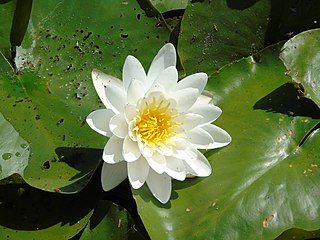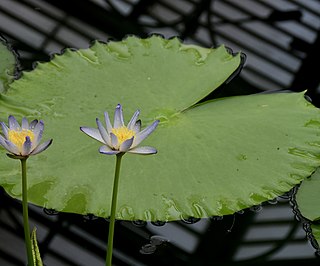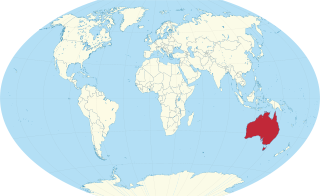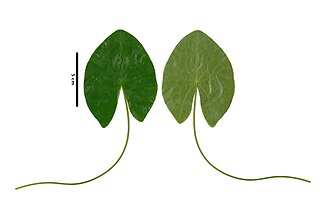
Nymphaea is a genus of hardy and tender aquatic plants in the family Nymphaeaceae. The genus has a cosmopolitan distribution. Many species are cultivated as ornamental plants, and many cultivars have been bred. Some taxa occur as introduced species where they are not native, and some are weeds. Plants of the genus are known commonly as water lilies, or waterlilies in the United Kingdom. The genus name is from the Greek νυμφαία, nymphaia and the Latin nymphaea, which means "water lily" and were inspired by the nymphs of Greek and Latin mythology.

Nymphaea macrosperma is an annual or perennial, aquatic, rhizomatous herb in the family Nymphaeaceae native to Australia and New Guinea.

Nymphaea ondinea is an aquatic plant in the family Nymphaeaceae native to northwestern Australia.

Nymphaea glandulifera is a species of waterlily native to tropical America.

Nymphaea vaporalis is a species of waterlily endemic to Queensland, Australia.

Nymphaea alexii is a species of waterlily endemic to Queensland, Australia.

Nymphaea carpentariae is a species of waterlily native to Queensland and Western Australia.

Nymphaea elleniae is a species of waterlily native to Papua New Guinea, and North Queensland, Australia.

Nymphaea georginae is a species of waterlily native to the Northern Territory, and the state of Queensland, Australia.

Nymphaea hastifolia is a species of waterlily native to the Northern Territory, and Western Australia.

Nymphaea immutabilis is a species of waterlily native to Western Australia, the Northern Territory, and Queensland, Australia.

Nymphaea jacobsii is a species of waterlily endemic to Queensland, Australia.

Nymphaea kimberleyensis is a species of waterlily endemic to Western Australia.

Nymphaea loriana is a species of waterlily endemic to Manitoba, and Saskatchewan, Canada.

Nymphaea noelae is a species of water lily endemic to Queensland, Australia.

Nymphaea subg. Anecphya is a subgenus of the genus Nymphaea.

Nymphaea subg. Confluentes is a subgenus of the genus Nymphaea.

Nymphaea subg. Lotos is a subgenus of the genus Nymphaea.

Nymphaea ondinea subsp. petaloidea is a subspecies of Nymphaea ondinea native to the Northern Territory, and Western Australia.

Nymphaea sect. Chamaenymphaea is a section within the subgenus Nymphaea subg. Nymphaea of the genus Nymphaea native to North America, Asia, and Europe.













